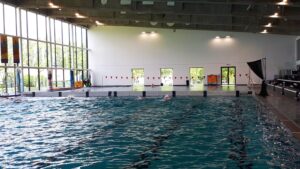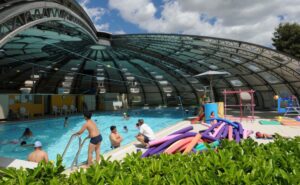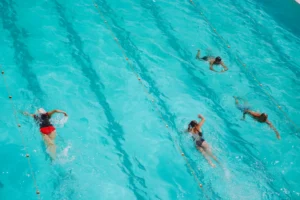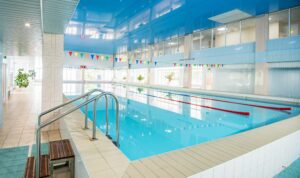Return on investment in just 6 months
"The return on investment was expected to be 9 months.
But not all the impacts of the solution had been valued: it seems that the IRR is much shorter than expected...".
(ANTOINE WATTRELOT ADVISOR TO THE PRESIDENT OF AQUAFLEURI)
The rise of digital technology has fostered urban innovation and smart cities are becoming more and more numerous. Local authorities have access to a large number of solutions enabling them to provide more services to citizens and to monitor the consumption of communal buildings (smart buildings). However, swimming pools and aquatic centres are still the forgotten ones in the smart city.
Antoine Wattrelot, advisor to the president of Aquafleuri, an operating company owned 60% by Engie, explains to us how the connected solution for optimising filtration flows by Sunny Shark helps him on a daily basis to reduce the operating costs of his aquatic centre.
The Aquanor water park is located a few metres from the Vélodrome de Champ-Fleuri, in Sainte-Clotilde.
It consists of :
- A 25-metre long multi-purpose pool with 4 water lines.
- A 305 m³ leisure pool.
- A 305 m³ learning pool.
- A 251 m³ relaxation pool. A 75 m³ playground lagoon.

The Aquanor aquatic centre consists of
The total electrical power rating is
The number of filter pumps installed on the site is
The consumption of the filter pumps represented 50% of the Aquanor aquatic centre's electricity bill. The site is with 10 pumps:
- Relaxation area 2×16 kW
- Wave ball 2×11 kW
- Swimming 2×11 kW, Leisure 2×7 kW
- Wading pool 2×5 k
This gives a total of 100 kW of nominal electrical power.
All these pumps were operating at 100% of their flow 24/24In the case of several of these ponds, the filtration rate set by the water treatment cabinet was higher than the minimum regulatory rate
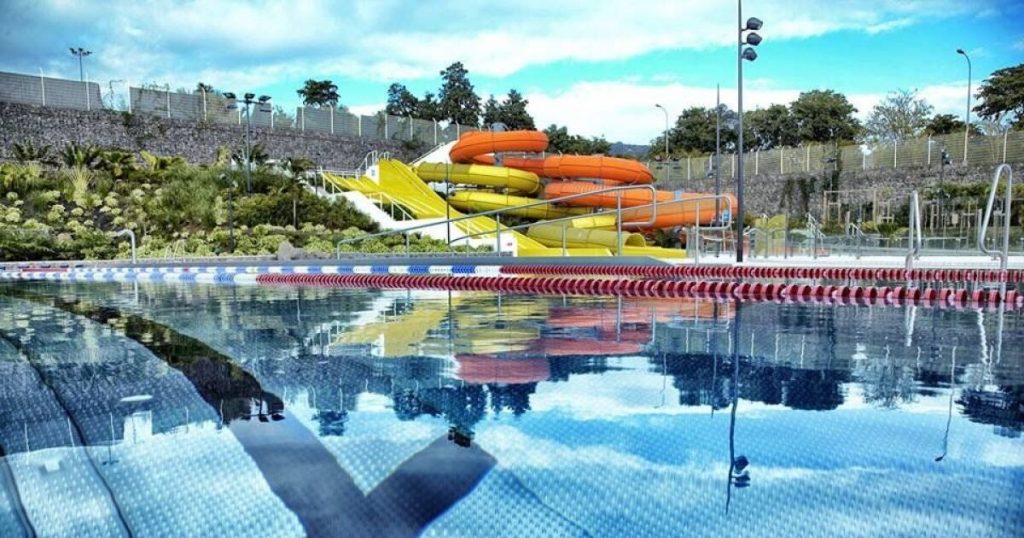
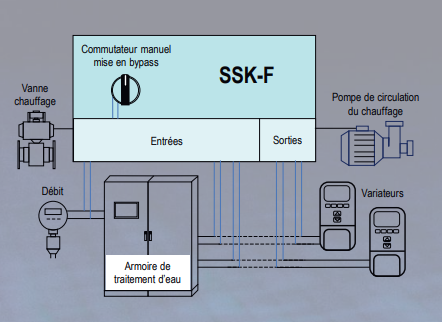
The water treatment cabinet does not allow for the following changes initial flowstoo high in relation to the regulatory minimums.
Only a manual adjustment on variable speed drives of the pumps was possible, which meant that the possibility of maintaining the flow rate as a function of filter contaminationor to restore the maximum flow rate for backwashing filters, for example.
To decouple the filtration flow from the heating needs of the pools, we installed circulation pumps for our heat exchangers.
Sunny Shark has sized This installation and SSK-F manages these pumps so that they are only started when needed. This has improved the efficiency of the heatingThis makes it easier to operate.
The connection of the SSK-F controller to the cabinet allows
operate according to 2 distinct modes :
- The classic mode for maintenance operations or automatic washing
- The optimised mode to reduce the consumption of filtration pumps
Since the installation of SSK-F, the flow rates are set for each basin at the legal minimum in period vacancy rateand at a value appropriate to the real constraints of each basin during the high occupancy It is very easy to adjust this flow rate to both comply with the regulations and the qater quality thanks to the product's graphic interface (Wifi link for tablets and smartphones).
There is also a "Boost" function to temporarily overfilter a pool in case of an incident or the need to quickly raise the chlorine level.
SSK-F is used to control the flow of pumps, which accounts for almost half of the site's electrical consumption.
The advantages are therefore the ability to control the installation, d'optimise electrical consumption both on one side financialthatenvironmental The energy mix in Reunion is 2/3 coal and heavy fuel oil.
Control via the tablet also allows technicians to save time during interventions and control visits.
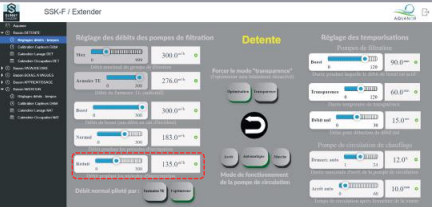
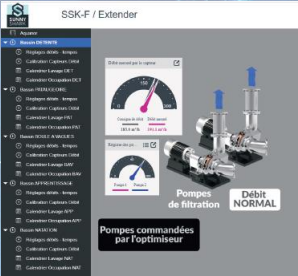
The constraint of the remaining duration of our operating contract required that the solution be paid for in less than a year.
Lanalyses after 6 months of operation already confirm this ! The costs required to implement the solution were 20 k€. The return on investment was expected to be 9 months.
But not all the impacts of the solution had been valued: it seems that the IRR is much shorter than expected...
This pumping station, which is a major part of our energy bill, is no longer the result of an imposed system, but one in which the technicians are the drivers.
The freeing up of technicians' time should also in time enable them to take on more work. plus height and so on. anticipation.


